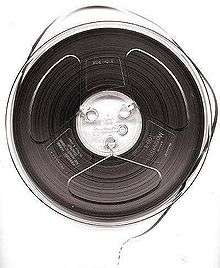Microsound
Microsound includes all sounds on the time scale shorter than musical notes, the sound object time scale, and longer than the sample time scale. Specifically, this is shorter than one tenth of a second and longer than 10 milliseconds, which includes part of the audio frequency range (20 Hz to 20 kHz) as well as part of the infrasonic frequency range (below 20 Hz, rhythm).[1]
These sounds include transient audio phenomena and are known in acoustics and signal processing by various names including sound particles, quantum acoustics, sonal atom, grain, glisson, grainlet, trainlet, microarc, wavelet, chirplet, FOF, time-frequency atom, pulsar, impulse, toneburst, tone pip, acoustic pixel, and others. In the frequency domain they may be named kernel, logon, and frame, among others.[1]
Physicist Dennis Gabor was an important pioneer in microsound.[1] Micromontage is musical montage with microsound.
Microtime is the level of "sonic" or aural "syntax" or the "time-varying distribution of...spectral energy.".[2]
List of microsound artists
References
- Roads, Curtis (2001). Microsound, p. vii and 20-28. Cambridge: MIT Press. ISBN 0-262-18215-7.
- Horacio Vaggione, "Articulating Microtime", Computer Music Journal, Vol. 20, No. 2. (Summer, 1996), pp. 33–38.
External links
- Microsound.org (mailing list focused on the Microsound aesthetic)
